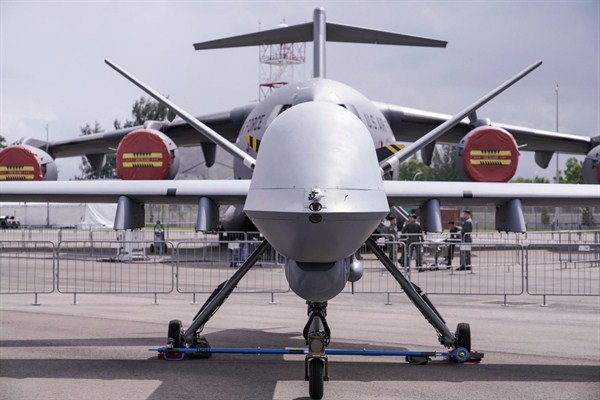Decades of technological advances have made drones readily available not only to governments, but to non-state groups, commercial actors and hobbyists as well, for everything from military strikes to package deliveries. The United States last month used an MQ-9 Reaper drone to assassinate Iran’s top military commander, Qassem Soleimani. In September, an attack on Saudi oil facilities utilizing drones and cruise missiles temporarily cut Saudi oil production in half. Even smaller, unarmed drones can cause massive disruptions. In December 2018, London’s Gatwick Airport, the second-busiest in Britain, shut down for 36 hours after a drone was spotted nearby, causing hundreds of flights to be cancelled or diverted at an estimated cost of $64 million.
To defend against these threats, more and more research is now being devoted to counter-drone technology, the market for which is estimated to grow between 20 and 30 percent over the next few years. A recent report by the Center for the Study of the Drone identified over 230 counter-drone products produced by 155 manufacturers in 33 countries. Everybody is buying counter-drone systems, from the German military to Chinese airports and British prisons. Even individuals can purchase personal drone detection and jamming devices. Meanwhile, developers are working on new unmanned systems able to bypass or overpower such defenses, spurring yet more innovation on counter-drone technology and posing challenges to policymakers and military planners.
Broadly speaking, there are three ways to down or intercept a drone: kinetically, electronically and by interception. The first option entails shooting down drones with bullets, rockets or other projectiles. Researchers are also looking into lasers and microwaves. The second option, electronic solutions, are the most promising growth area, and most popular among counter-drone system manufacturers. These systems jam or interrupt the signal between the drone and its operator. A more advanced version of this approach is to hack into the drone’s computer system and take over its command. Finally, there are several ways to intercept drones, including ground-based systems to launch nets that entangle the offending drone’s rotors. Even more creatively, the Dutch police and the French military have been training eagles to intercept drones, albeit with limited success.

